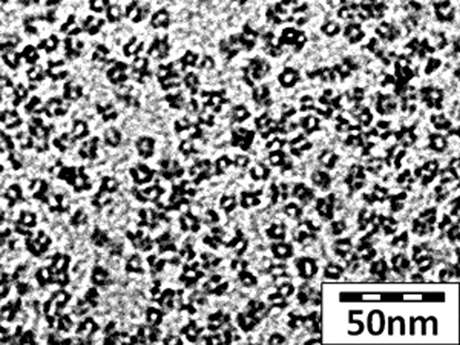'Cornell Dots': Scientists develop world's smallest drug deliverer

(Phys.org) —Cornell researchers have created a pore in "Cornell Dots" – brightly glowing nanoparticles nicknamed C-Dots – that can carry medicine. This new and improved nanoscale courier may help light up cancer cells and provide a new patient-friendly, viable option to battle cancer.
"No one has ever made a one-pore, super-small silica particle – at 10 nanometers and below – to deliver medicine," says Ulrich Wiesner, Cornell's Spencer T. Olin Professor of Materials Science and Engineering. "Clearing this object out of the body quickly also minimizes its impact on the body."
Wiesner presented the talk, "Cornell Dots: Fluorescent Core-shell Silica Nanoparticles to Interrogate Biological Environments," at the American Chemical Society meeting in New Orleans on April 7.
Previously, Wiesner and his colleagues had demonstrated the useful, diagnostic aspects of C-Dots. Now, they have illustrated the porous C-Dots (mC-Dots, for mesoporous) concept: The mC-Dots could act like tiny Navy Seals on a seek-and-destroy mission: Find the tumor, deliver medicine to kill it, then escape in urine within a couple of hours.
A single C-Dot consists of dye molecules encased in a chemically inert silica shell that can be as small as 5 nanometers in diameter. (A nanometer is one-billionth of a meter, about three times the diameter of a silicon atom).
Previous research showed that the outside of the shell can be coated with organic molecules that will attach to such desired targets as tumor surfaces or even locations within tumors.
The cluster of dye molecules in a single dot in solution fluoresces near-infrared light much more brightly than single dye molecules, and the fluorescence will identify malignant cells, showing a surgeon exactly what needs to be cut out and helping ensure that all malignant cells are found. But, surgeons may one day forego the scalpel, because with a built-in pore, the mC-Dots have the ability to bring medicine to the tumor.
Provided by Cornell University


















